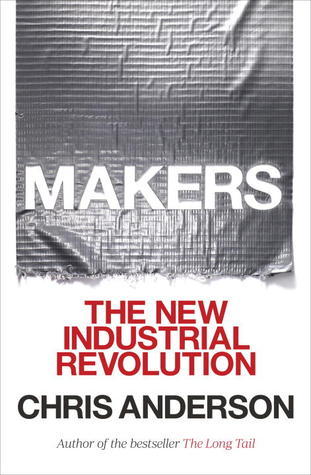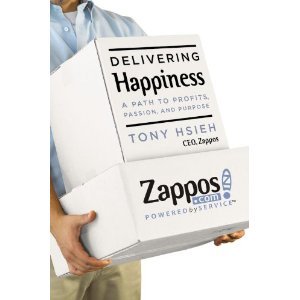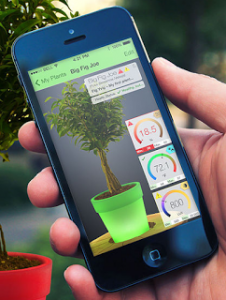Rod Collins's Blog, page 11
September 8, 2015
The Wisdom in Sports Bets
by Rod Collins
There are few, if any business leaders, who will quibble with the observation that we are living in a time of unprecedented change. Digital downloads, social media, crowdsourcing, and online sales—all staples of our everyday lives today—were non-existent when many of today’s business leaders began their careers. The business world executives find themselves in today looks nothing like the one they joined a few decades back. An unexpected consequence of all this change is that these leaders are reluctantly discovering that, if they want to thrive in this new world, they have to learn a very different set of business rules.
One of the most important of these new rules is that the smartest organizations are no longer the ones that leverage the intelligence of their smartest individuals. Rather, the smartest companies in a post-digital world are the ones who have learned how to rapidly aggregate and leverage the collective intelligence of everyone in their organizations. That’s because the pace of change is so rapid today, it’s simply not possible for one person to process everything that’s happening in markets in real time. In the old business world, a highly intelligent CEO could single-handedly map out the course of the company, but those days are long gone. If businesses want to thrive in a rapidly changing world, they need to have processes that can quickly and effectively aggregate the wisdom of their crowds.
 While most mainstream organizations have yet to learn the value of collective intelligence, the companies in one peripheral industry have known for years that the sagacity of the masses usually outperforms the judgment of individual experts. If you’re in the business of sports betting, there is no illusion about the talents of star performers when you have access to the collective knowledge of the bettors.
While most mainstream organizations have yet to learn the value of collective intelligence, the companies in one peripheral industry have known for years that the sagacity of the masses usually outperforms the judgment of individual experts. If you’re in the business of sports betting, there is no illusion about the talents of star performers when you have access to the collective knowledge of the bettors.
While the Las Vegas casinos hire experienced experts to manage their sports gambling operations, they also maintain highly sophisticated computer systems to track the wagers of the bettors. Casinos don’t make money by picking winners and losers, but by correctly setting the point spread such that half of the gamblers will win and half will lose. Because Las Vegas pays out less when wagers win than it collects when they lose, their sports betting operations will always make money when the number of winners equals the number of losers. While the staff experts do set the initial point spreads, the casino computer systems track all incoming bets and adjust any spread if more than half the bettors are on one side of the betting line. Thus, the final value of the point spread is determined by the collective wisdom of the crowd.
Las Vegas sports betting operations are consistently profitable because rather than relying on the expertise of a few star performers, they have the capacity to quickly access the collective knowledge of their customers. The casinos understand a business secret for success that most organizations have yet to learn: Nobody is smarter than everybody.
The sports betting business would be risky business if it relied on a centralized business model, depended solely on the judgments of its pundits, and set up organizational structures to reinforce their authority. Because the gaming industry fully understands that the crowd is smarter than the experts, sports betting operations rely on collective intelligence to successfully guide the establishment of their point spreads. Unfortunately, unlike the casinos, most organizations have been reluctant to embrace the learning processes necessary to access collective knowledge. Consequently, as Gary Hamel correctly observes in his book, The Future of Management, “there is more wisdom embedded in the average sports bet than there is in the typical corporate investment decision.”
Rod Collins (@collinsrod) is the Director of Innovation at Optimity Advisors and the author of Wiki Management: A Revolutionary New Model for a Rapidly Changing and Collaborative World (AMACOM Books).
September 7, 2015
September 1, 2015
Rights Expression Languages and Vocabularies: Which Does What?
by Julia Goodwin
For many years, segments of the media world have developed and continue to develop Rights Expression Languages (RELs) so that media rights information can be readable by computers and displayed as text readable by humans. This allows licensors and licensees to share contract information about content more easily. Some of these languages are used for specific types of media such as images or news while others cover the media gamut. These “languages” define a common structure or containers that can store specific rights metadata. That rights metadata or vocabulary may be whatever a licensor is using internally or it may be a shared vocabulary standard that works with a particular REL.
This blog provides an overview of the major REL and rights vocabulary initiatives and any media specialization. Each REL’s website is cited for reference. If your company is considering implementing an REL, I hope the information provided here helps you identify which RELs to research more deeply.
The Candidates:
ccREL: (The Creative Commons Rights Expression Language) is an open source language submitted by the W3C to the Creative Commons for the management of rights licenses which are expressed as HTML documents informing the Internet community of rights holders for an IP, including media. It does not have a standard rights vocabulary developed yet.
Dublin Core Rights Element: The Dublin Core is not an REL, but rather an open source metadata standard used for describing visual materials on the Internet, although it does allow for simple rights statements. Rights is one of 15 “element sets” within its metadata schema. Its simplicity makes it flexible and translatable to other languages and even allows it to provide a translation layer between other rights metadata standards. It does not have a standard vocabulary. Like ccRL, rights are expressed as readable HTML.
Idealliance’s PRISM: PRISM 3.0 is an REL specification developed by Idealliance, a membership organization. It includes both standards for contract metadata and rights vocabulary metadata. It is a strong, emerging resource for the multimedia publishingindustry. A 2014 draft is under public review. It is preceded by 2012 standards.
IFTA: (International Film and Trade Association). This is not an REL but standards for contract and rights terms. This association is member-based with 150 members from 23 countries.
METSRights: This is an open source REL designed for describing simple rights for digital objects. Based upon the METS (Metadata Encoding and Transmission Language), it can hold information related to a rights holder, a rights declaration, and a rights context (the context in which the rights declaration is used and by whom). METS itself is popular with National, Government and University Libraries including Harvard, Stanford and The National Library of Portugal, for example.
MPEG-21: This standard was started by the Moving Pictures Experts Group in 1988. It created a brief rights data dictionary before adopting XrML as a REL standard. Latest documents posted to its site date July 2005. See XrML below. and
ODRL: This open source resource for all media types was created by WC3. It does have a vocabulary (ODRL version 2.1 vocabulary) but I personally caution that it may not adequately capture all details of emerging video rights and distribution channels.
PLUS (Picture Licensing Universal System): This is not an REL but an international vocabulary standard for image use. This is a non-profit, membership-based organization. It has a wide range of image licensing terms and actions defined in its online, searchable glossary. It also includes a matrix for content types and contract templates. Used by major image libraries and organizations worldwide.
RightsML: This is an open source REL based on ODRL above for news syndication. It uses ODRL version 2.1 vocabulary.
XrML: This open source REL was originally developed by Xerox. It was adopted as the basis for the rights expression language for MPEG-21. Now owned and released by ContentGuard), it was proposed as a standard by Microsoft, Hewlett-Packard and VeriSign.
Julia Goodwin (@julia.littlewing) is a Senior Manager in the Information Management practice of Optimity Advisors. She has 18 years’ experience in the Media Industry in Application Development, Management, Innovation and a special interest in Rights Management.
August 31, 2015
August 18, 2015
Why A Great Work Culture May Be The Only Sustainable Business Advantage
by Rod Collins
In a rapidly changing world, is it possible for a company to create a sustainable competitive advantage? For well over a century, the pursuit of this managerial “brass ring” has been the commonly accepted foundational strategy for most business enterprises. According to this strategy, the secret to corporate growth and longevity is finding a way to differentiate your products from those of your competitors and exploiting that difference to sustain the advantage. This exploitation is accomplished by rigorously safeguarding proprietary knowledge stocks, maximizing cost efficiencies, and constructing barriers to entry to hold off current and potential competitors. This strategy has become the unquestioned conventional wisdom for achieving market success because corporate leaders assume the world of business is governed by the dynamics of scarcity and the axioms of competition.
 Chris Anderson, however, doesn’t agree with the conventional wisdom. Anderson, the former editor of Wired magazine, is a highly successful entrepreneur who in addition to his well-known publishing interests, has also dabbled in open source ventures. One such venture is ArduPilot, an open source platform, able to control autonomous multicopters, fixed-wing aircraft, traditional helicopters, and ground rovers. In his book, Makers: The New Industrial Revolution, Anderson relates the story of what happened when, in late 2010, several members of the ArduPilot design community noticed that Chinese clones of their products were for sale in various online marketplaces, and how, when asked by the community members what he was going to do about this blatant “piracy,” Anderson stunned them when he responded that he was inclined to do nothing.
Chris Anderson, however, doesn’t agree with the conventional wisdom. Anderson, the former editor of Wired magazine, is a highly successful entrepreneur who in addition to his well-known publishing interests, has also dabbled in open source ventures. One such venture is ArduPilot, an open source platform, able to control autonomous multicopters, fixed-wing aircraft, traditional helicopters, and ground rovers. In his book, Makers: The New Industrial Revolution, Anderson relates the story of what happened when, in late 2010, several members of the ArduPilot design community noticed that Chinese clones of their products were for sale in various online marketplaces, and how, when asked by the community members what he was going to do about this blatant “piracy,” Anderson stunned them when he responded that he was inclined to do nothing.
Knowledge Is an Abundant Resource
Anderson’s unconventional response reflects his understanding that the digital revolution has radically shifted the core dynamics and axioms of business. The most dramatic consequence of this shift is that technological advances over the past two decades have made knowledge an increasingly important—if not the most important—economic asset. This is significant because knowledge is uniquely different from other types of economic assets.
Unlike other natural resources, knowledge is not a scarce resource. Knowledge is an abundant resource and is most valuable when it is comingled with other knowledge. The only way it grows is by giving it away. Thus, holding knowledge as proprietary is counterproductive because it diminishes its value over time. Although it may seem counterintuitive, when knowledge is shared, everyone’s intelligence is increased and all the contributors get far more back than they give away.
From Competitor to Collaborator
With this understanding in mind, when Anderson discovered the clones were the work of a single individual who went by the name of “Hazy,” he gave the supposed “pirate” edit permission to the community’s wiki. He was impressed with the quality of Hazy’s Chinese translation of the instruction manual and given that the operating license of open source communities meant that any work performed by any member was available to all the members, Anderson saw no harm in adding the “pirate’s” voice to the ArduPilot community.
With his new credentials, Hazy proceeded to enhance the product by integrating a seamless Chinese translation of the manual onto the official site. Once that was complete, he surprised Anderson by making quality corrections to the English manual and working through the Issues list, fixing bugs that others were too busy to handle themselves. Hazy quickly became one of ArduPilot’s best development team members. By fully including an apparent competitor into the open source community as a collaborator, both the Chinese and the English versions of the product were substantially enhanced.
Knowledge Flows Over Knowledge Stocks
Anderson’s unusual approach to an apparent piracy provides two important lessons on how the emergence of abundant economic assets is transforming many of the traditional tenets of business. The first lesson is a new understanding about the deeply held conviction that knowledge is power. In the past, this power was maintained by safeguarding proprietary information and being in a position of having knowledge that no else has. However, a natural consequence of proprietary power is, while one company gains an advantage over others by hording and exploiting its knowledge, the development of that knowledge is stunted because it remains in the hands of a few people.
Prior to the digital revolution, hording knowledge was a workable business strategy for cornering markets and preserving steady profits because business leaders had the wherewithal to do so. However, that’s all changed thanks to the digital revolution, which has dramatically increased the velocity of the exchange of information. Today knowledge flows are far more valuable than knowledge stocks for the simple reason that, in a post-digital world, the return on assets is far greater on knowledge flows.
This new understanding of knowledge assets is the foundation behind Apple’s remarkable success. The iPhone is a platform designed for knowledge flows, which are popularly known as apps. Anyone is free to build an app, and when an app succeeds, both Apple and the app developer win. Innovative companies like Apple are making it very difficult for traditionally minded companies to build sustainable competitive advantage because the innovators’ products have radically reduced the barriers to entry. Today, all an entrepreneur needs to disrupt a market is a good idea, an iPhone, and a credit card, as we’ve seen recently with the rapid rise of Uber.
The Power of a Great Work Culture
The second and perhaps most important lesson we learn from Anderson is the power of a great work culture. A defining characteristic of great work cultures is that they are places where all voices matter. Anderson’s story is a powerful demonstration of this premise. By focusing on knowledge flows rather than knowledge stocks and welcoming the voice of a competitor, Anderson highlights the value of collaboration in building a better business. He also shows that market advantage today has more to do with building a sustainable collaborative advantage than a sustainable competitive advantage, which explains why, in a rapidly changing world, a great work culture just may be the only sustainable business advantage.
This article was originally published in the Huffington Post.
Rod Collins (@collinsrod) is the Director of Innovation at Optimity Advisors and the author of Wiki Management: A Revolutionary New Model for a Rapidly Changing and Collaborative World (AMACOM Books).
August 17, 2015
Why A Great Work Culture May Be The Only Sustainable Business Advantage
August 11, 2015
There’s An App For That. Does Anybody Use It?
by Robert Moss
By Mad Tatu (cropped) [CC BY-SA 4.0 (http://creativecommons.org/licenses/b...) via Wikipedia Commons
In a really smart Vox piece, Ezra Klein peers into the future and predicts that many media companies will look more like wire services in the years to come. Along the way, he comments on how rapidly digital media is moving and how what seems like the hot new trend one year looks silly just a year later. “Remember, for instance,” he asks “When the iPad launched, and apps were going to save journalism? Lol.”That observation is just an aside in his piece, but it struck a chord for me, for I’ve seen far too many media companies (and companies in other industries, for that matter) stumble down the primrose path when it comes to creating apps.
Gimlet Media, a start-up podcast production company, offered an interesting example a little while back, which they chronicled as an installment in their podcast series “Start Up” (episode #13, in this case.) Gimlet already has a small lineup of really good podcasts and was trying to figure whether they should make an important business shift and, instead of just producing content, create an app to deliver that content to listeners. (And potentially, to try to doing something even bigger and become “a platform.” All the investors in Silicon Valley seem convinced that you can’t just make whatever application it is you are trying to make but you must build a platform and even better an ecosystem—all the better for getting that hockey-stick hyper-growth.)
So the Gimlet team set about trying to figure out what their app should be, and they teamed up with Google Ventures to create a quick prototype, which they demonstrate in a cool video. In their design sessions, they narrowed in on the following ideas for what the app might do—its features, if you will:
Let the podcast creators share content (like documents and visual artifacts) that they can’t “show” in an audio-only podcast
Provide a “talk to us” function to let listeners record their own stories
Provide access to members-only content and allow people to purchase a membership
Let listeners more easily support their favorite podcast by clicking a button to purchase the host’s book or a sponsor’s product without having to go to a web site and punch in a promo code (as you have to do with most podcast sponsors these days.)
The results are what we see all too often when it comes to apps. We start by deciding first that we want to build an app (or, our marketing people run into our offices and shout, “We have to have an app! Now!”). Then we try to figure out what the app should do, and when we start grasping for features, the natural tendency is to try to make it solve our own problems, not those of potential users.
What pressing needs of podcast listeners, after all, does the prototype app describe above solve? There are already plenty of apps (like the Podcasts app that comes free and pre-installed on iPhones) that satisfies the pressing immediate need of most podcast listeners. Are listeners really itching to look at “bonus content,” especially of a visual sort? Are they really saying, “boy I wish I could record a story for these guys” or “I really, really want to buy one of those Harry’s razors but typing in a URL and promo code is too hard?”
I doubt it. Most of these features seem aimed more at solving the problems not of the podcast listener but of the podcast creator (“I want to make money by having my listeners buy things through affiliate links and if it’s easier maybe more people will do it.”) Despite my best efforts, I can’t come up with a podcast listener problem out there that’s so pressing that someone would shell out even 99 cents for an app that solves it or even, in a world where so many dozens of apps already clog our smart phone screens, bother to download it for free.
Yet I see that again and again when media companies try to come up with a “game changer” app that’s going to save their bacon. Like (speaking of bacon) the New York Times’s Cooking app. The rationale for its existence? It provides “inspiration on what to cook” and “helps you find, save and organize recipes.” But is that a problem that cooks really have these days on the Internet? I’ve certainly never heard anyone complaining about it, and Google (not to mention Pinterest) does a wonderful job of helping cooks find inspirations and recipes.
It all comes back to one of the fundamental principles of application design, and it applies whether that application is a big one for desktops and web browsers or a small “app” for tiny screens. You have to start first with a problem that needs to be solved and choose the proper approach (web, mobile-enabled web, device specific app) that bests suits the problem.
And if the main problem we are trying to solve is that “we need to make more money somehow” or “we just need to have an app,” well, in the words of Mr. Klein, “Lol.”
Robert Moss @RobertFMoss is a Partner and the leader of the Technology Platform practice at Optimity Advisors.
August 10, 2015
August 4, 2015
Manage Your Global Content With DAM
by John Horodyski
“It has been said that arguing against globalization is like arguing against the laws of gravity” — Kofi Annan
One of digital asset management’s (DAM) distinguishing qualities it that it can serve as the single source of truth for rich media content across publications, broadcast, social media channels and geographies. In today’s global economy, the ability to leverage content wherever it may be generated is critical to growth, efficiency and even risk management. When applied as an integrated strategy, DAM technologies and processes can form the foundation for communication and content sharing between internal departments, external suppliers and customers across borders.
The global marketplace is driving DAM growth trends due to:
Proliferation of media types and channels
Demand for product releases everywhere globally, and in every way
Shrinking product lifecycles and time to market
Compliance — content is connected and DAM maintains those connections
Global DAM Issues
“Globalization is not a monolithic force but an evolving set of consequences – some good, some bad and some intended. It is the new reality” — John B. Larson
Most organizations doing business in multiple markets face challenges in managing information. A single policy for content storage, security, retention and rights management no longer suffices. Each market may have its own set of requirements while also needing to collaborate with others.
In addition, the lifecycle of digital content may be altered from traditional use cases as new regions are addressed. This requires an understanding — from inception — of content use possibilities so that metadata is designed to support a broad range of use cases. While the ability to leverage content across markets improves its ROI, it also increases its risk profile. To mitigate these risks, organizations must put in place quality controls as well as rights management processes.
Along with technical considerations, organizations must take into account language and culture differences between markets. What is a “boot” in one country is certainly not a “boot” (aka “car trunk”) in another. Similarly, a “jumper” is not always a “jumper” … that is, a comfortable sweater. Related issues like the need to translate and localize content for particular markets only adds to the complexity of a global operation. Vocabularies will evolve over time to stay relevant, which requires processes to manage this change. In a global context, new terminology may add to assets as well as synonyms and/or slang terms. Think “globally” and act “globally” is the best offensive strategy.
Governance is Good
“Globalization means standardization” — Arundhati Roy
Applying an effective layer of governance and change management effectively future-proofs the DAM ecosystem. Governance helps define the rules of the DAM program and acts as the framework that ensures goals are reached at each stage of the initiative, from implementation to cruising-level two, five, 10 plus years in. The governance structure establishes the strategic, operational and technical decision-making processes that ensure the DAM program excels in its mission.
Establishing formalized operating metrics at the outset of the project will ensure success of implementation and provide a mechanism for tracking use. Governance begins with developing a project charter, working committee, and timelines, and continues as an ongoing practice to deliver ROI, innovation and collaboration. Governance oversees the DAM program elements like the core metadata standard, user workflows and general practices that will be carried out on an ongoing basis. DAM governance provides strategic leadership, establishes priorities and policies, and is accountable and transparent to the organization.
Connections, Context, Content
“Information Technology has been one of the leading drivers of globalization, and it may also become one of its major victims” — Evgeny Morozov
Now more than ever, we live in a connected world. And within marketing operations, DAM can serve as the core of marketing automation and production for a global content lifecycle. Consistent messaging drives brand loyalty and it is important to define their purpose and function.
What are your assets?
Where are your assets?
What are you trying to do with them?
When will you need to access (identify, retrieve, distribute) them?
Building a metadata schema that serves these answers and includes the user, the content creators, the editors, the distributors adds value to digital assets and increases their use into the future to support ongoing global strategies.
Creative Workflows
“If you can’t describe what you are doing as a process, you don’t know what you’re doing” — W. Edwards Deming
Globalization brings with it the complexity of managing content across a distributed workforce. The ability to identify, capture and ingest assets within a DAM system to facilitate access to multiple locations requires coordination and a formalized workflow process. Strategically defining workflow offers the opportunity to build better relationships among internal teams and partners across regions.
To determine how a global DAM will achieve stated goals, think about how and when digital assets are created and modified, how they move through the process of distribution and finally how they will be stored and retrieved later. These factors will drive the processes that support the DAM.
The DAM Axis
As organizations grow in size, evolve and take on additional global market opportunities, change will be the constant for the people, processes and technology supporting business and marketing operations. DAM plays a critical role in this change serving as the single source of truth for digital assets, and as the center of global marketing operations management. Metadata, workflow, technology and cultural context all effect global operations and must be addressed in the DAM. For many large organizations, managing global content does not have to be a burden, but rather an opportunity to optimize the asset lifecycle. DAM can be the axis upon which your content is managed, for one and for all.
This article was originally published in CMSWire.com.
John Horodyski @jhorodyski is a Partner within the Media & Entertainment practice at Optimity Advisors, focusing on Digital Asset Management, Metadata and Taxonomy.
July 28, 2015
What’s Happening At Zappos May Be All About the School Bus Test
by Rod Collins
Over the past few weeks, there’s been much written about Zappos’ recent adoption of Holacracy—with most observers questioning the wisdom of CEO Tony Hsieh’s bold move to transform the innovative retailer into a bossless company. The business pundits wonder why Hsieh is tinkering with the wildly successful start-up, which despite having less than 2,000 employees, has become the darling of both mainstream and social media headlines. What’s the motive for embracing a radically different management structure when Zappos has already become a new fixture on Fortune’s list of the “Best Companies To Work For”? Perhaps, some speculate, operational issues or weaknesses in their distribution channels might be getting in the way of Zappos’ quest to “deliver wow.” Others wonder if the unconventional CEO has fallen victim to the trap of impulsively embracing “change for the sake of change.” One fact all the doubters highlight is the recent departure of 210 employees, each of whom elected to take a severance package rather than work in workplace with no bosses. The general sentiment of the pundits is that the loss of 14 percent of an organization in one day is clear proof that something is obviously awry.
Why Mess With a Great Thing?
There’s little doubt that Hsieh is conducting one of the biggest experiments in management history.  Whether Zappos will sustain its meteoric success without a traditional hierarchy or destroy its celebrated culture by self-destructing into anarchy remains to be seen. However, most of the commentators seem to question whether this risk has any real reward. After all, implicit in most of their concerns is the age-old conventional wisdom, “If it’s not broke, don’t fix it.” But what bothers them most is why Hsieh is messing with what is obviously not just a good thing, but a great thing. Perhaps the motive behind this bold experiment is to make sure that Zappos will always pass the “School Bus Test.”
Whether Zappos will sustain its meteoric success without a traditional hierarchy or destroy its celebrated culture by self-destructing into anarchy remains to be seen. However, most of the commentators seem to question whether this risk has any real reward. After all, implicit in most of their concerns is the age-old conventional wisdom, “If it’s not broke, don’t fix it.” But what bothers them most is why Hsieh is messing with what is obviously not just a good thing, but a great thing. Perhaps the motive behind this bold experiment is to make sure that Zappos will always pass the “School Bus Test.”
The School Bus Test
The School Bus Test, as described by Simon Sinek in his best-selling book Start With Why, is the answer to the question: Would the organization continue to thrive at the same pace if the founder or leader were to be hit by a school bus? In other words, will the culture of an extraordinary organization extend beyond the lifetime of its founder?
While Zappos is widely recognized for leveraging its great culture to create a great company, the emphasis the organization places on culture has been strongly nurtured by its CEO. But what will happen when Hsieh moves on? After all, there have been other companies renowned for their great cultures that have waned over the years after their founders were no longer a part of the picture. Perhaps, in going bossless, Hsieh hopes to emulate the example of another company noted for its great culture that has clearly passed the School Bus Test, W. L. Gore and Associates.
Driving Performance Through Peer Accountability
Gore, one of a handful of companies that has made Fortune’s annual list of the “100 Best Companies To Work For” in every year the list has been produced, was founded in 1958 by Bill Gore. Right from the start, Gore wanted his new company to be very different from the traditional enterprises of the time. He wanted his company to be an incubator of innovation and a model of collaboration. He quickly realized that the key to creating a culture that naturally enabled both innovation and collaboration was to make sure that no one in his organization, including himself, would have the authority to kill a good idea or keep a bad idea alive. That meant there would be no bosses in his new company. And so, Gore designed his organization as a self-organized peer-to-peer network rather than a bureaucratic top-down hierarchy.
For those who wondered how anything would get done if there were no bosses, Gore handled that problem by establishing an innovative performance system that holds people accountable to their peers, and in the process, demonstrated that peer accountability usually drives a higher level of performance than holding people accountable to single supervisors. After almost 60 years, Gore is today a $3 billion enterprise with 10,000 associates in 30 countries, and quite impressively, has made a profit in every year since it began marketing its products.
Why The Reward Is Worth The Risk
Most importantly, Bill Gore and his company passed the School Bus Test in a way that seems to have eluded companies that have permanently faded from “The Best Companies To Work For” list. Although these businesses had built innovative cultures, most of these organizations maintained a basic—albeit loose—hierarchical structure. But it was enough structure to allow future leaders to significantly alter the cultures that defined their early years. However, because Gore had eliminated all traces of hierarchy from his organization, no one has ever had the authority to kill the culture he cultivated and, today almost 30 years after his death in 1986, the company continues to thrive as a self-organized network.
What’s happening at Zappos—despite losing 14 percent of their employees in one day—is probably a good thing in the long run. If the people who left are those who could never adapt to a self-organized company, then it is probably best for both them and Zappos that they have moved on. What’s encouraging is that 86 percent of the workers declared themselves “all in” to this bold experiment. As those that remain continue to learn how to self-organize their work, they can take comfort in knowing that self-organization has been done before and has worked out very well. The reward is worth the risk because the greatest risk is not passing the School Bus Test. By embracing Holacracy and self-organization, the workers at Zappos have the chance to pass with flying colors.
This article was originally published in the Huffington Post.
Rod Collins (@collinsrod) is the Director of Innovation at Optimity Advisors and the author of Wiki Management: A Revolutionary New Model for a Rapidly Changing and Collaborative World (AMACOM Books).
Rod Collins's Blog
- Rod Collins's profile
- 2 followers










